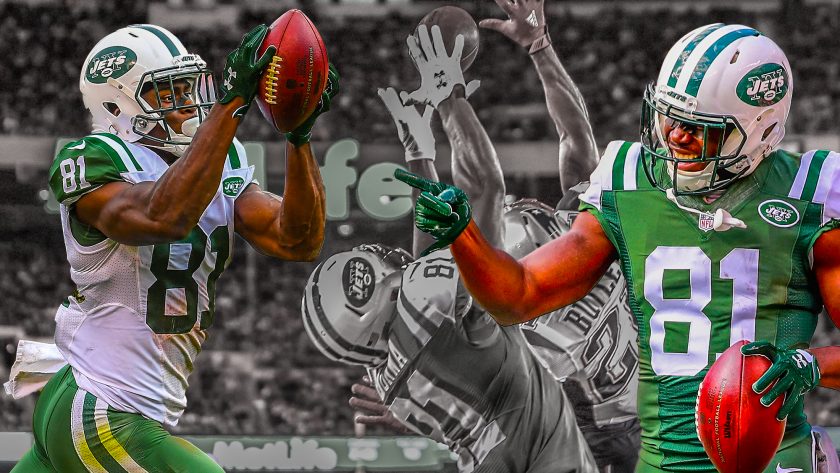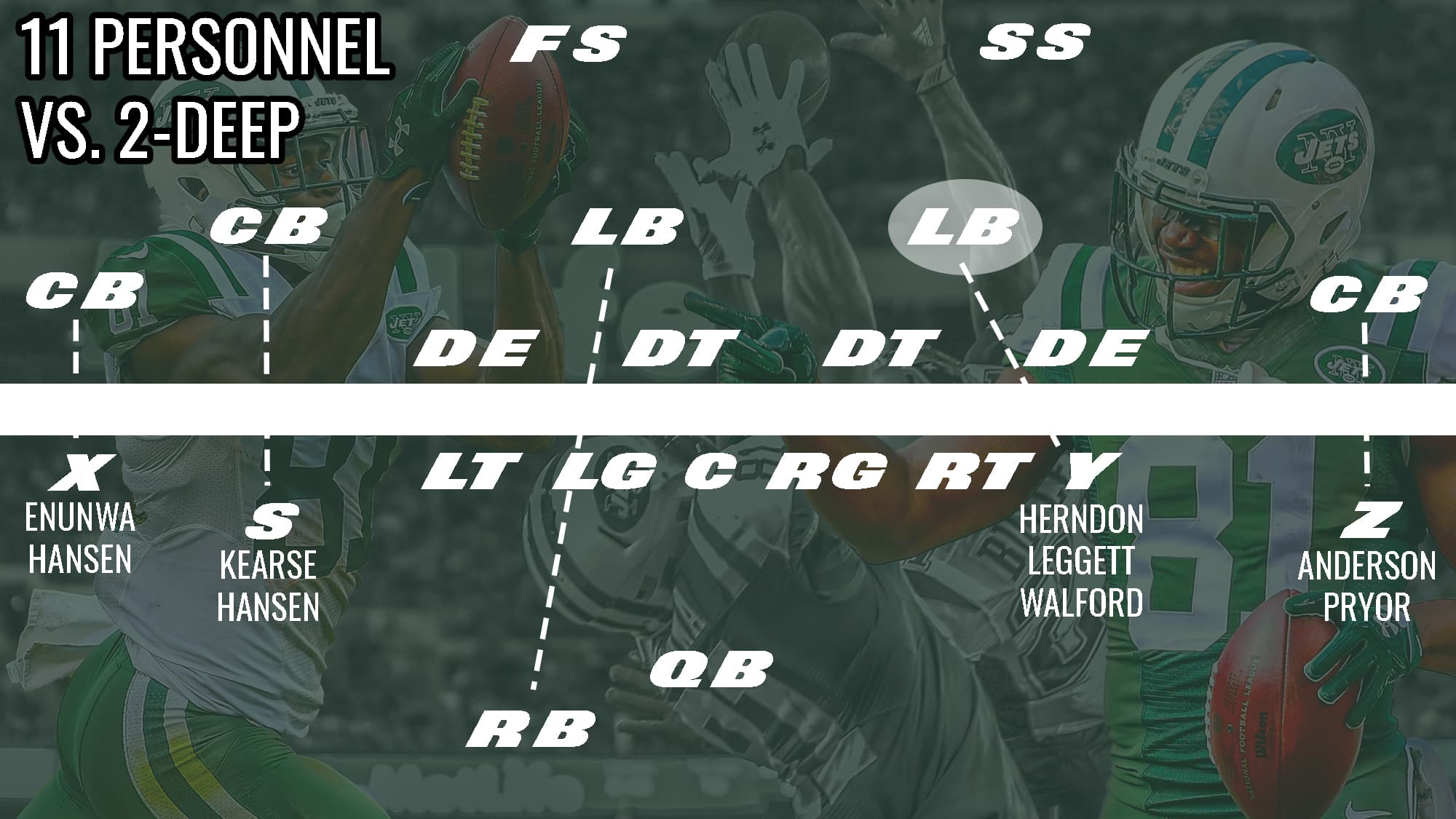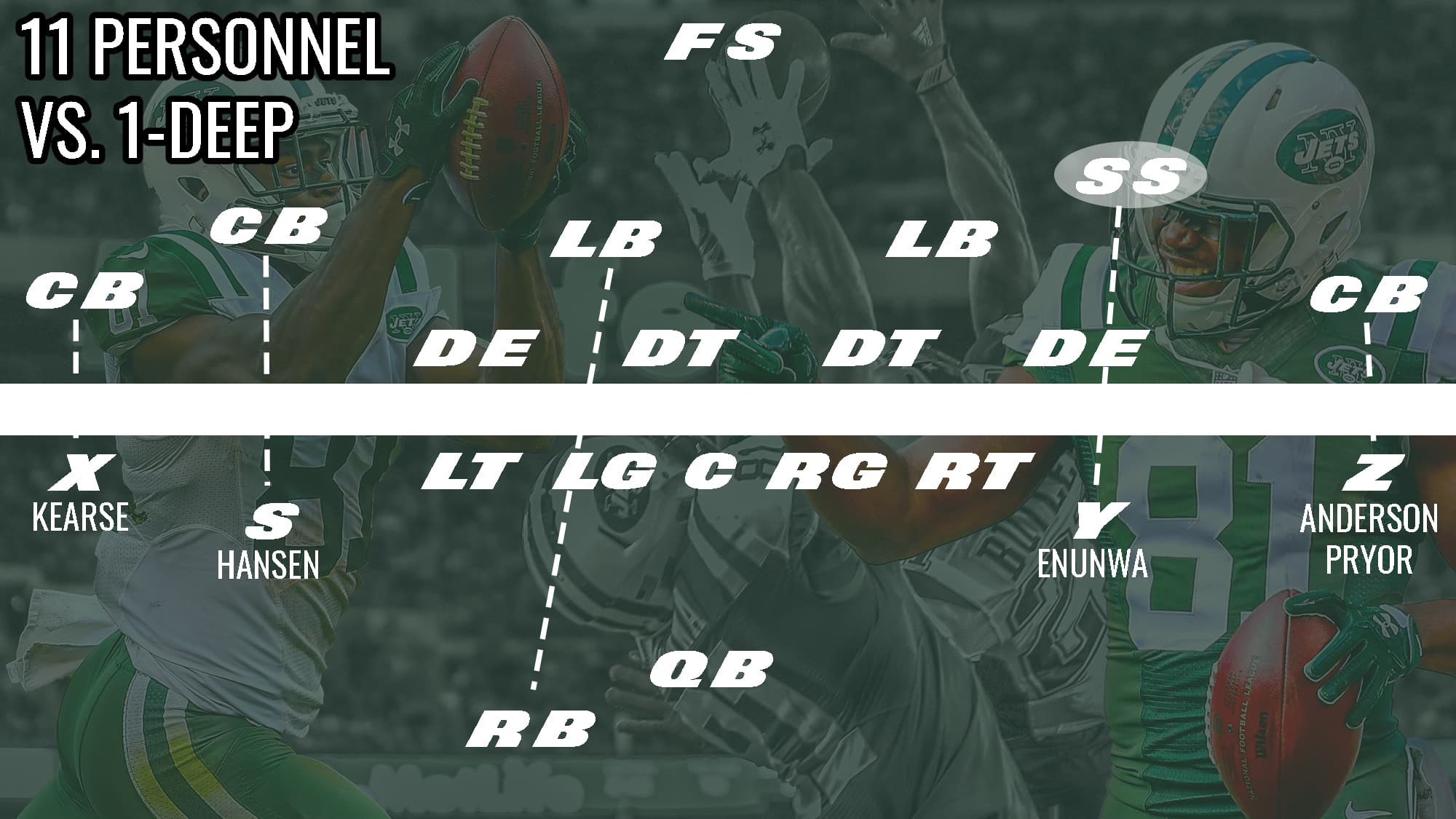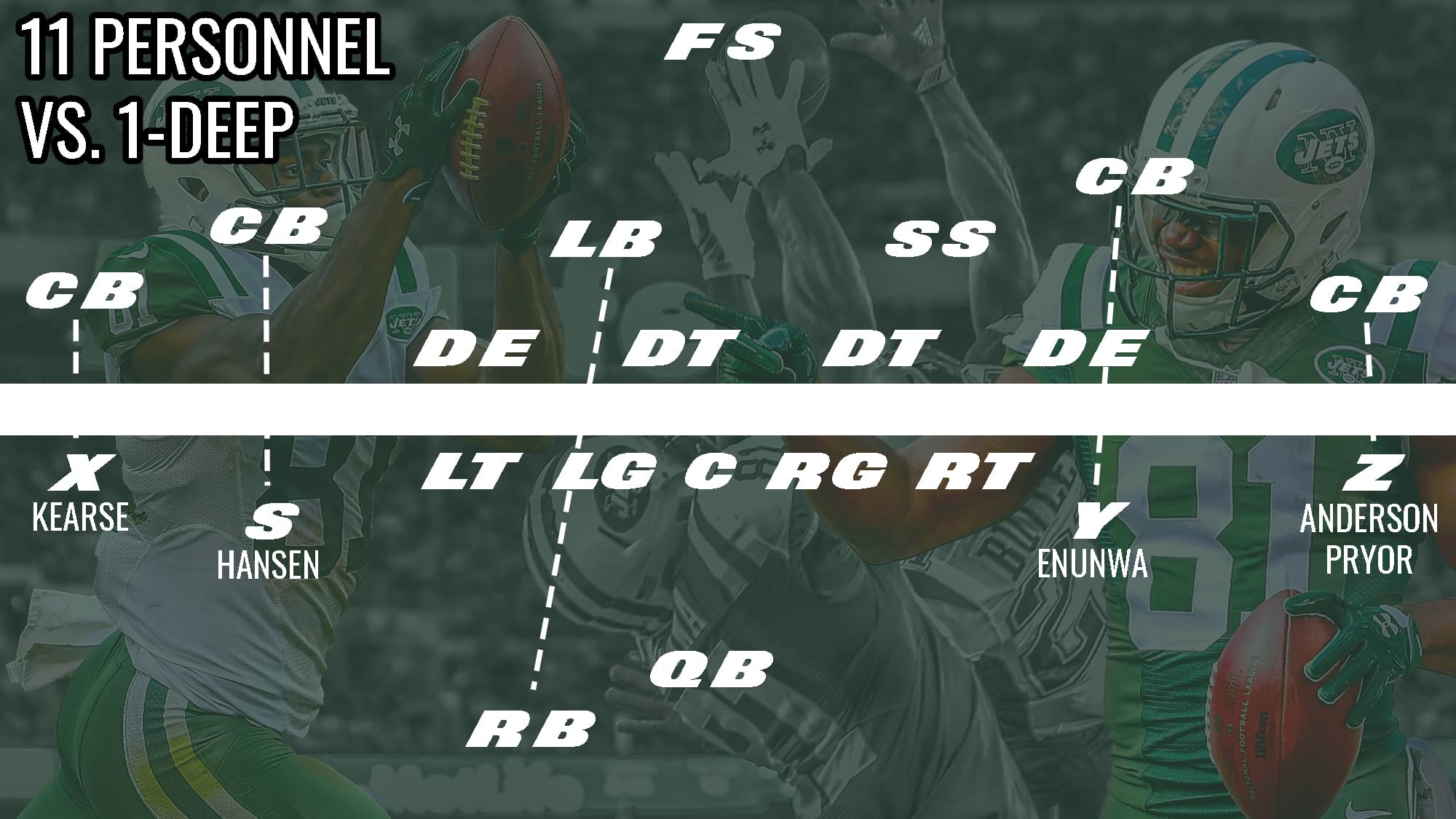New York Jets tight end means little with matchup nightmare Quincy Enunwa back

The New York Jets tight end position, though bare and inexperienced, should be the least of the team’s concerns with matchup nightmare Quincy Enunwa back.
One kid coming to the NFL Combine weighing 234 pounds took the position of tight end. Another kid weighing just nine pounds less, 225, took on the role of wide receiver. One veteran weighing 232 pounds, who experienced both of the previous kids, represents one of the nastiest possession threats of the last decade.
This tight end/wideout stuff is really becoming confusing—especially within the weight range of 220 to 235 pounds.
The kid clocking in at 225 was Quincy Enunwa, circa 2014, Evan Engram was the 234-pound tight end last year, and Brandon Marshall is that veteran whose experience has touched the likes of both youngsters.
One man is a tight end while the two others are wide receivers. Why?
Simply put: only due to position designation at the combine.
Though Engram hits the New York Giants program at a cool 240 pounds these days, much can be debated about his real weight. The point still holds true that kids like Engram and Enunwa matchup in body size strikingly similar. One plays tight end. One plays wide receiver.
Both represent serious matchup issues for the defense and it matters not that Enunwa’s stats go down in the books by way of wide receiver. Only a mere positional determination has made the Jets tight end situation the worst in the league.
[sc name=”Jets Center” ]When Chan Gailey was still running the offense two and three years ago, the tight end was never used. Ryan Fitzpatrick had the pleasure of throwing to the aforementioned B-Marsh, Eric Decker and, yes, Enunwa. Though there’d be no official tight end on the field, Enunwa essentially played the Y while the fourth wide receiver took the spot as the third wideout (Jeremy Kerley, Jalin Marshall, Robby Anderson, etc.). Kellen Davis was used in pro and other situations that warranted a true blocking force on the line.
What makes Enunwa at the Y so dangerous is that his blocking ability is as good as any wideout in the NFL.
Here’s what the Jets 11 personnel would like with Enunwa at wide receiver while a true tight end stays in the game.

With Enunwa at wideout and a true tight end in Chris Herndon (over 250 pounds) manning that spot, the defense will always come out in a nickel and the linebacker or strong safety will have the responsibility (depending on two or one deep).
There isn’t anything to think about defensively here. On the other hand, when Enunwa plays the tight end (and the Jets go four receivers) or 11 personnel with Quincy at the Y, the defense is put in an immediate pickle.

What to do?
Should the defensive coordinator go with a nickel, a linebacker or strong safety is going to have one hell of a time covering Enunwa one-on-one. If they go with a fourth cornerback (what’s needed to take Enunwa), the Jets suddenly have a major leg up on the ground.
First of all, leaving Enunwa in with his tight end-like blocking prowess against a corner isn’t fair. Secondly, getting that dime defense on the field provides the Jets rushing attack that much more room.
This is why the four wideout look will always reign supreme with a guy like Enunwa on the roster. The matchup opportunity pertaining to three WR or more sets is outstanding. The flexibility is terrific. He’s both a weapon through the air and via blocking the smaller corner opposite him via the ground.
Take the two examples above and throw the defense into a one-deep look. If the defense left a nickel out against the Jets three WR look with Enunwa at the tight end, the strong safety would have one hell of a time attempting to cover Quincy.

The more likely situation will have the defense always treating Enunwa as a receiver. Therefore, anytime Enunwa is out there with three other receivers, a dime (four CB) will follow suit.

This is when the offense finds a leg up in the rushing attack while in multiple wideout sets. Enunwa’s blocking ability destroys his man and whether to have the strong safety sniffing in the box to help the run means everything.
Should he sniff, Robby Anderson the 9-route becomes a dangerous option. Should he play deep with the free safety, running the ball becomes a gimme with a solid offensive line.
This is why speedy, vertical threat tight ends thrive in the NFL. This is why the likes of Travis Kelce torched the Jets when Calvin Pryor and David Harris were on the field attempting to cover the man. This is why Jimmy Graham (265 pounds) has torched slower defenders.
It matters not that Quincy Enunwa weighs 225 pounds. He possesses blocking abilities of a tight end. It matters not that Evan Engram is classified as an NFL tight end. The kid moves and runs routes like a wideout. Defenses will be forced to treat him like a wideout.
Weights and designations aside, these guys are the true matchup nightmares in the NFL and with Quincy Enunwa back after missing an entire season, Sam Darnold, Jeremy Bates and the entire New York Jets offense won’t need one of their young tight ends when 11 personnel is used. Enunwa is that damn good.
[sc name=”Jets Link Next” link=”https://elitesportsny.com/2018/07/03/new-york-jets-7-most-beloved-players-franchise-history/” text=”7 Most Beloved New York Jets In Franchise History” ] [sc name=”Jets Footer” ]Robby Sabo is a co-founder, CEO and credentialed New York Jets content creator for Jets X-Factor - Jet X, which includes Sabo's Sessions (in-depth film breakdowns) and Sabo with the Jets. Host: Underdog Jets Podcast with Wayne Chrebet and Sabo Radio. Member: Pro Football Writers of America. Coach: Port Jervis (NY) High School. Washed up strong safety and 400M runner. SEO: XL Media. Founder: Elite Sports NY - ESNY (Sold in 2020). SEO: XL Media.
Email: robby.sabo[at]jetsxfactor.com






